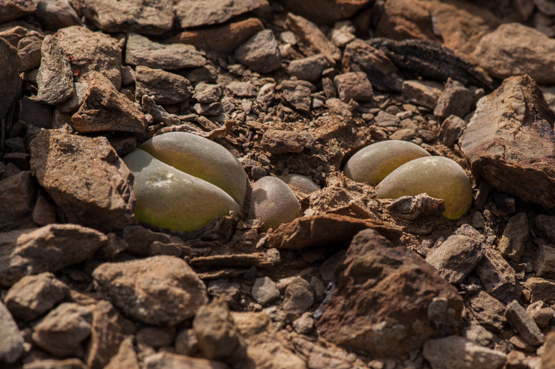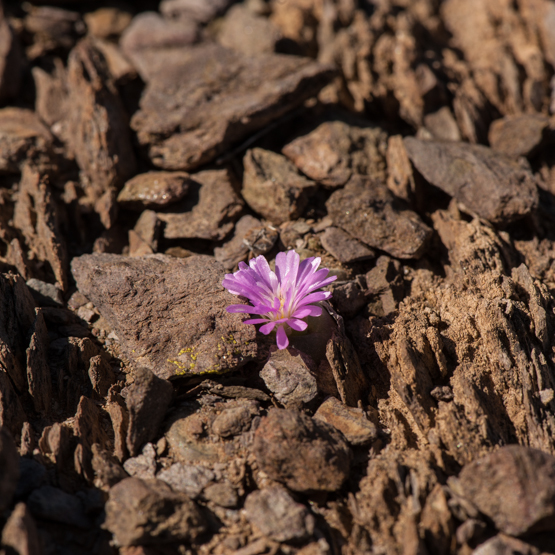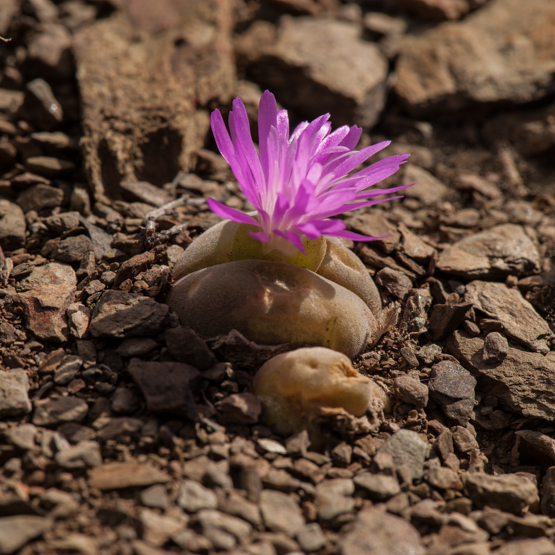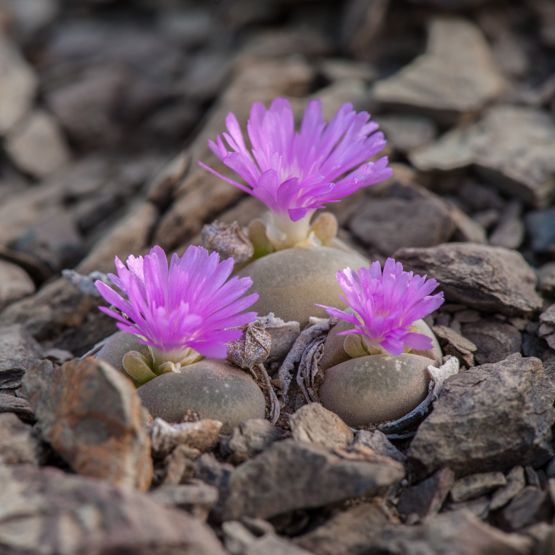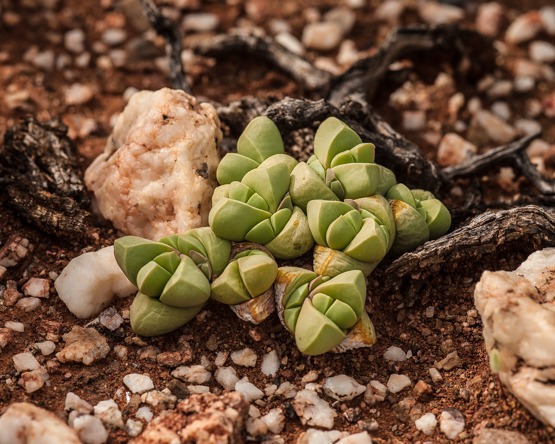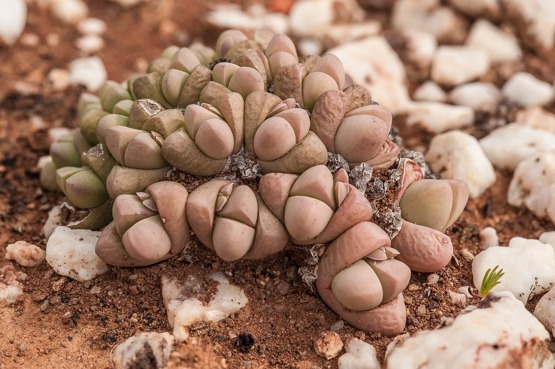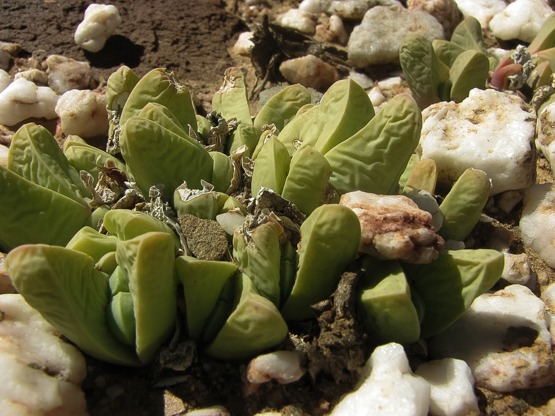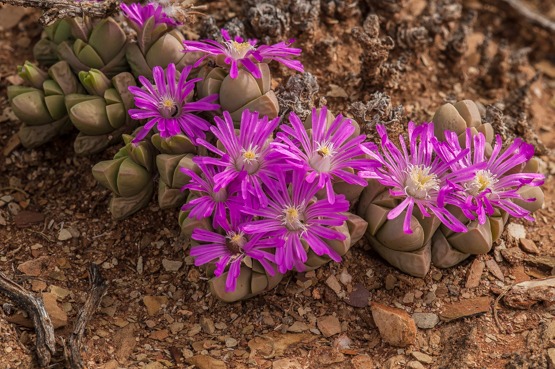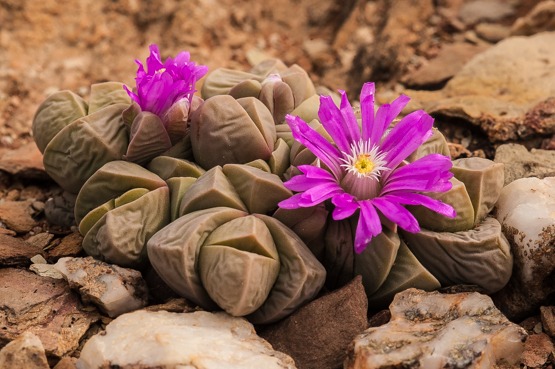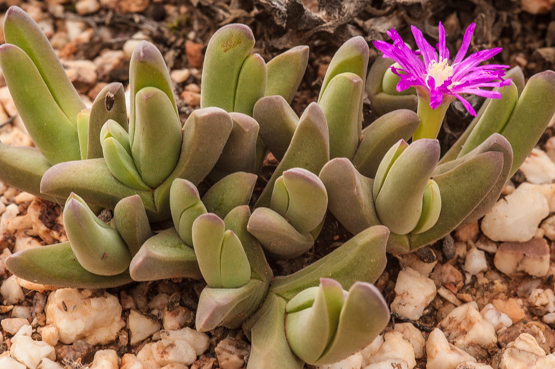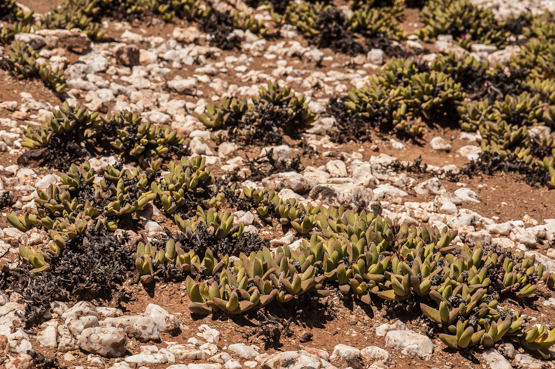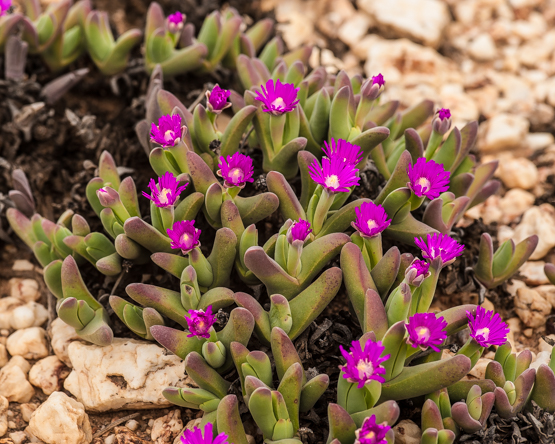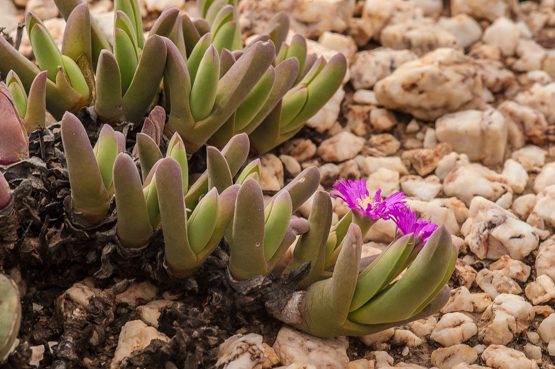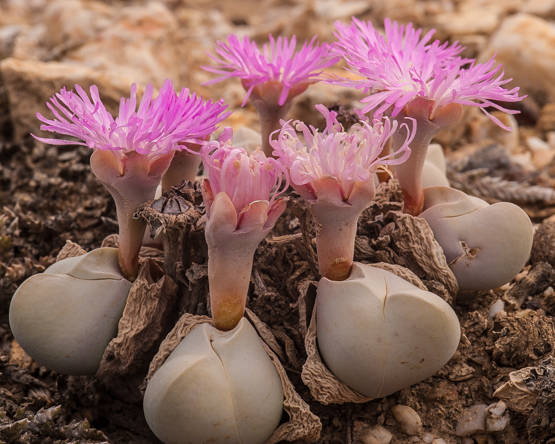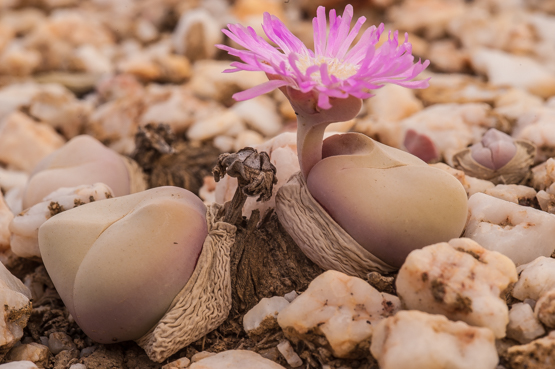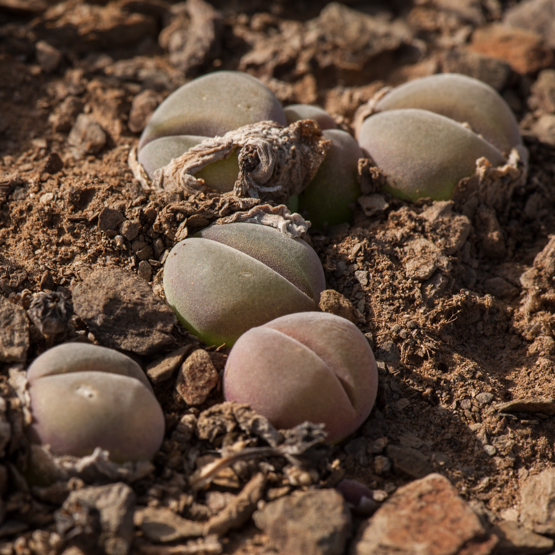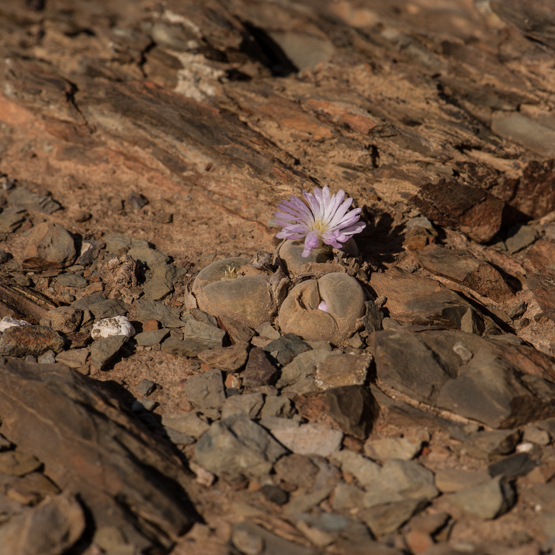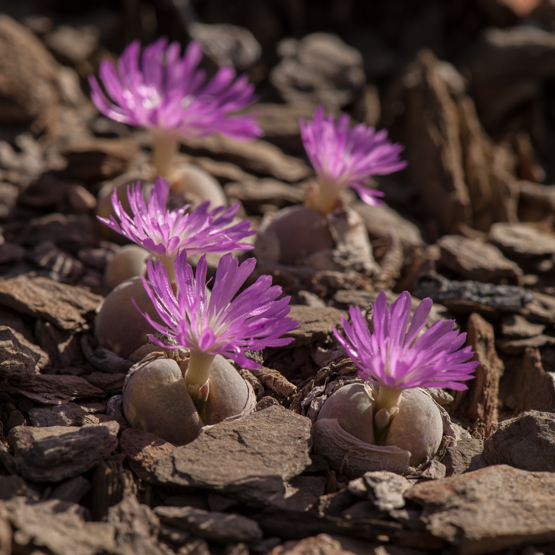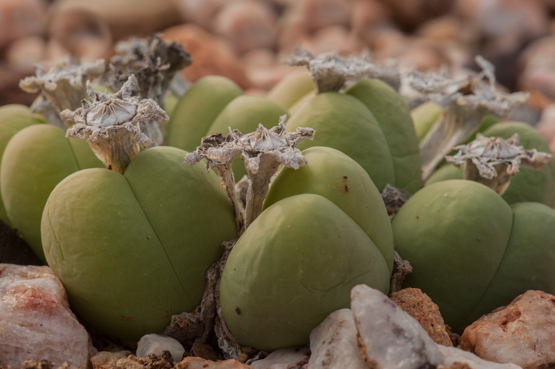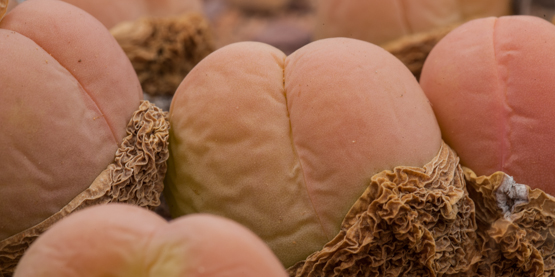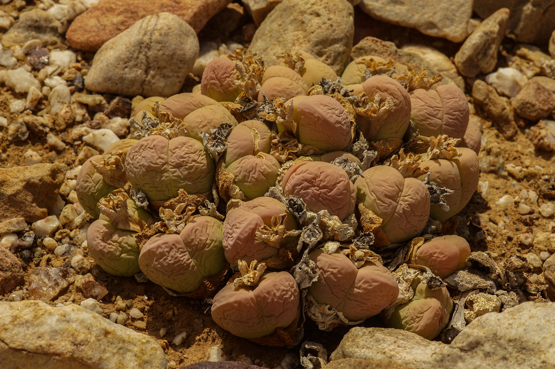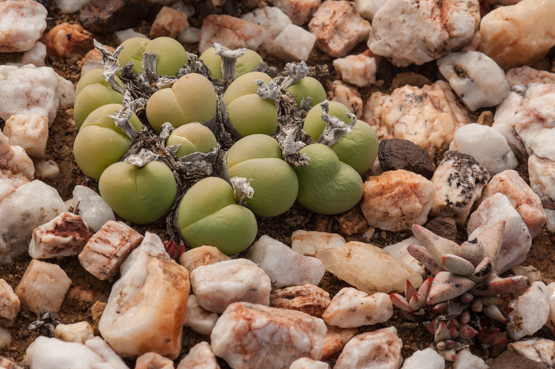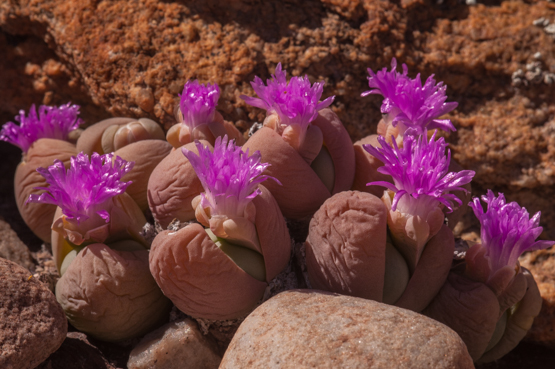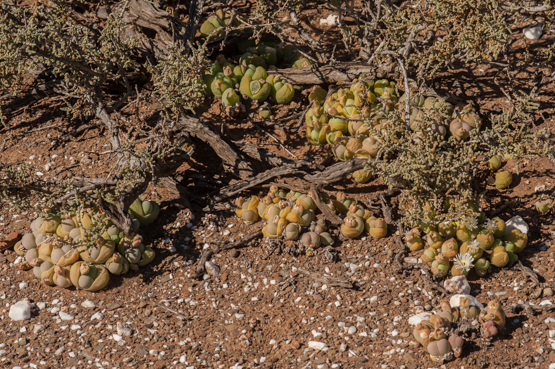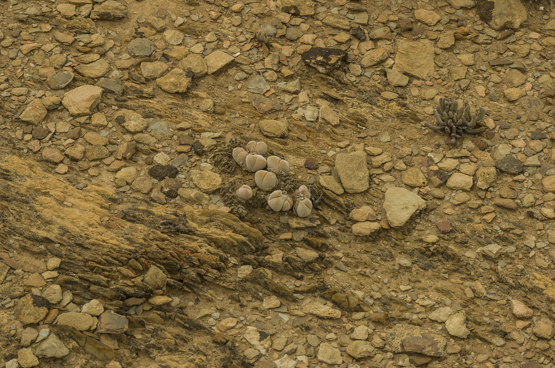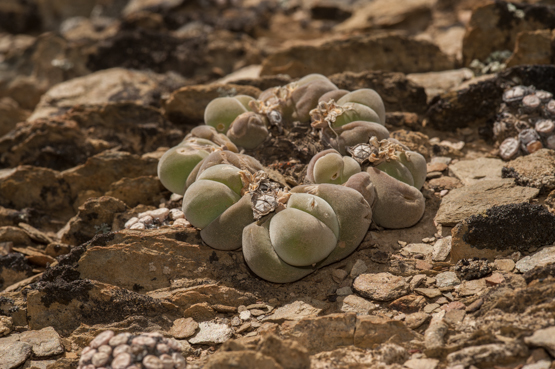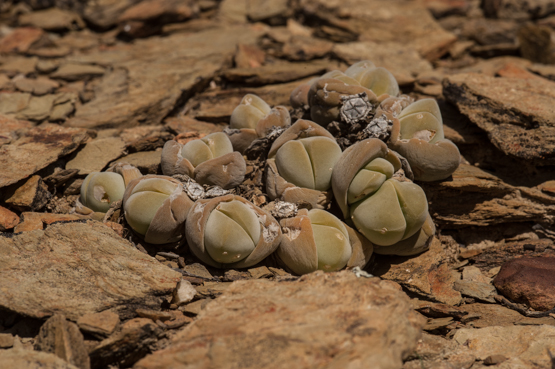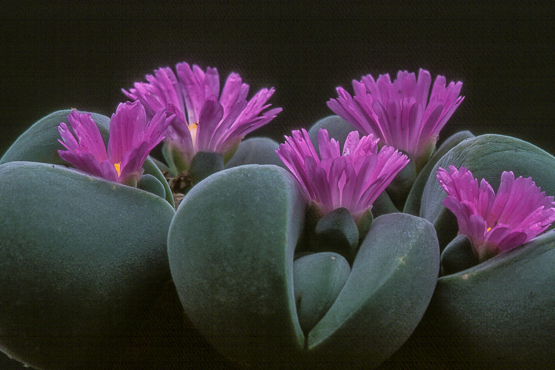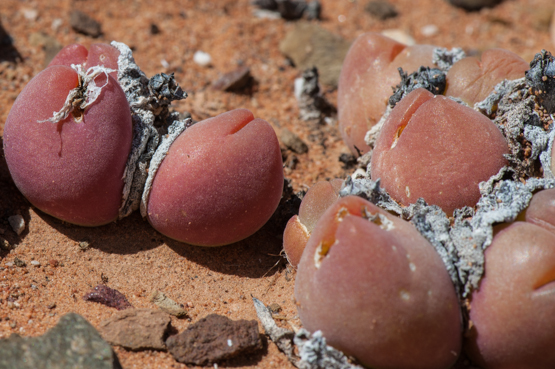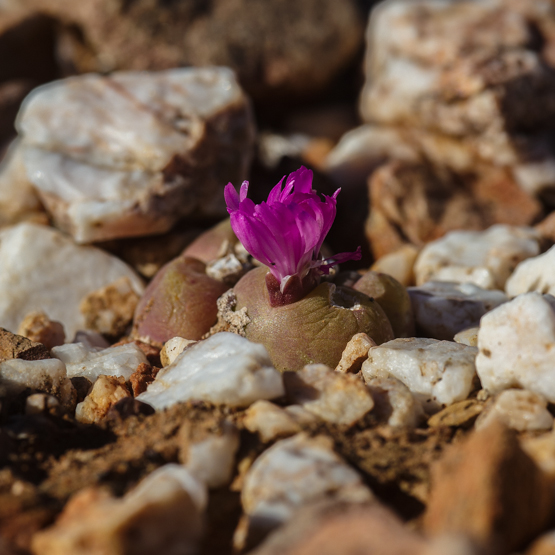It has taken me a couple of years to be at the right spot at the right time to photograph this species in flower. I knew of only one small locality, some 130 kms from where I lived and the few times I went there they were not in flower. Nowadays I live much nearer, but the main thing is that I found out that the plants flower a few months earlier than almost all other Gibbaeums (late April and early May). Anyway, yesterday I went there with two friends and lo and behold: there they were, in full bloom.
“The Gibbaeum Handbook” by G. C. Nel (1953), gives the following information:
The shale hillocks, on which it seems to thrive best, consist of laminated shales and are entirely devoid, at times, of any other vegetation. They are quite bare and G. nebrownii is embedded in the soil and only the top surface is exposed. During the hot summer months, it is withdrawn into the soil and one only sees a brown membrane, the remainder of the old leaves, and is, consequently, very difficult to find. It resembles a Lithops or an Ophthalmophyllum in this respect. It is squeezed into the crevices between the slate layers”.
The species is only found sporadically in the western part of the Little Karoo.
The first two pictures were taken 30 June 2013, the others 4 May 2014
